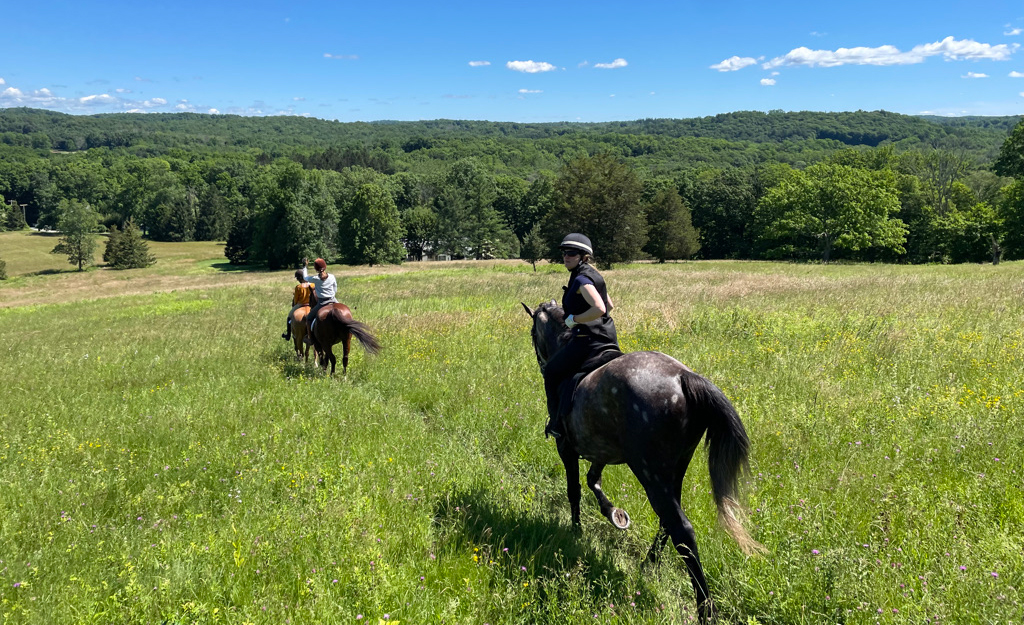Safety on the NSBTA Trails
The past couple of years have been unusual in terms of the number of incidents where horses and/or riders have been injured. In light of these incidents, the NSBTA would like to suggest some safety guidelines for trail riders.
Carry a cell phone:
Please take a cell phone with you when you ride, or at least have one for your group. This will enable you to call for help if you need it.
If you (or your riding group) do not have a cell phone, or you don’t want to take it with you, tell someone in your barn where you are going and when to expect you back. For additional details see “Trail Emergencies” below.
Ride with someone else:
Try not to ride alone.
If you do ride alone, stay on trails that you know well and do not jump.
Conditions:
Please be sure you are back in your barn by sunset. North Salem is full of wetlands and other natural hazards that can be very dangerous, especially in the dark.
Watch out for ice and mud which are very slippery for horses. We suggest that your horses have the proper shoes for the winter: cleets, rims, snowball pads, or borium/snow studs. Most importantly, stay on dirt roads or trails with good footing. Never, ever go off the trail. Check the NSBTA website for trail closures. When in doubt about the conditions, think of the property as your own. Please don’t tear up the trail or the ground. We want to stay on good terms with the landowners. Riding on private property is a privilege.
Trail Emergencies
If a person is injured:
Call 911. If you have a cell phone and call 911, the 911 dispatcher can usually determine where you are. If you know how to drop a pin using your map application and share it with the 911 dispatcher, it may make it easier for first responders to find you quickly. Also consider using a personal safety application which can dial 911 (or any other number you choose) if you are unconscious. If you decide to use a personal safety application, remember to tell it you are ok if you do not need help. Most give you 30 seconds to do this.
If a horse is injured:
Call your vet. We recommend that you have a conversation with your vet today to make sure they can provide emergency services on the trails. If your vet cannot help you, please call me and I will refer you to vets that can. Needless to say, you are responsible for paying the vet bills and the cost of moving your horse from the scene.
Thank you for reading this and I hope these guidelines are helpful in outlining trail safety. If you have comments or suggestions please get in touch with me.
Alison Estabrook
914-275-5671
